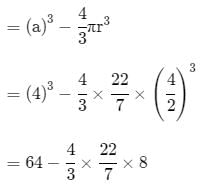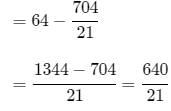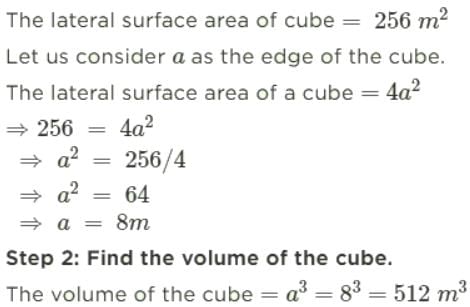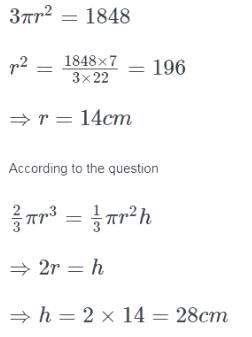Test: Surface Area & Volumes- 2 - Grade 9 MCQ
25 Questions MCQ Test - Test: Surface Area & Volumes- 2
The total surface area of a cube is 96 cm2 . The volume of the cube is
If the outer diameter of a pipe 21 m long is 1 m, then its curved surface area is
A cube of side 4 cm contains a sphere touching its sides. Find the approximate volume of the gap in between.
The cost of digging a pit of dimensions 4.5m×2.5m×2.5m at the rate of Rs 20 per cubic metre is
If the volume of a sphere is 4851 cm3, then its surface area is
The lateral surface area of a cube is 256 m2 The volume of the cube is
The cost of cementing the inner curved surface of a 14 m deep well of radius 2 m at the rate of Rs 2 per m2 is
The ratio of the radii of two spheres whose volumes are in the ratio 64 : 27 is
The volume of resulting cuboid formed when two cubes each of side 6 cm are joined end to end is
A hemispherical bowl is made of steel 0.25 cm thick. If the inner radius of the bowl is 3.25 cm, then the outer curved surface area of the bowl is
The difference between the total surface area of a cube of side 4 cm and its lateral surface area is
The diameter of the base of a cylinder of curved surface area 88 cm2 and height 14 cm is
Given that the surface area of a spherical shot put is 616 cm2. its diameter is
The number of litres that a cuboidal water tank of dimensions 6m×5m×4.5m can hold is
If the surface area of a solid sphere is 1386 cm2. then the total surface area of the solid hemisphere of the same radius is
The total surface area of a right circular cylinder of height 4 cm and radius 3 cm is
If a spherical balloon grows to twice its radius when inflated, then the ratio of the volume of the inflated balloon to the original balloon is
The surface area of a cuboid whose length, breadth and height are 15 cm, 10 cm and 20 cm respectively is
The number of spherical bullets each 5 dm in diameter which can be cast from a rectangular block of lead 11 m long, 10 m broad and 5 high is
The number of planks of dimensions (5m×25cm×10cm) that can be placed in a pit which is 20 m long, 6 m wide and 80 cm deep is
If the lateral surface area of a cylinder is 132 cm2 and its height is 7 cm, then its base diameter is
If the total surface area of a hemisphere is 1848 cm2, then the diameter is
The volume of a cylinder whose circumference of the base is 132 cm and height 25 cm is
The number of solid sphere each 6 cm in diameter, which can be moulded from a solid cylinder of height 45 cm and diameter 4 cm without any loss is




 \
\












